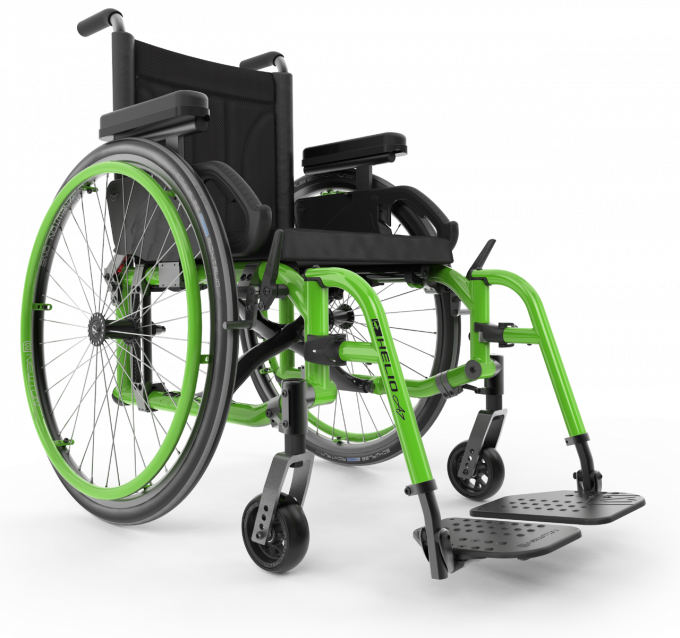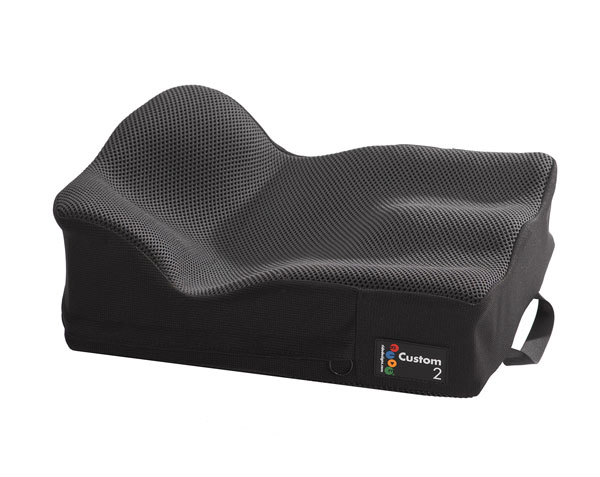Choosing The Right Wheelchair- Ultimate Guide 2022
Wheelchairs are more than just a mobility device; they’re also an extension of the body that helps people regain independence and move about the world.
Today’s wheelchairs come in various designs and choices to suit the varied demands of the highly diversified population that use them, assisting in compensating for both short-term and long-term conditions.
Our complete guide will help you understand the different types of wheelchairs available and what to look for when choosing one that’s right for you or your loved one.
What Is A Wheelchair?
A wheelchair is a chair with wheels designed to be propelled by the person sitting in it, using either manual power or a motor.
The first recorded wheelchair dates back to the early sixteenth century, and since then, they have undergone many design changes to accommodate different user needs.
Nowadays, wheelchairs are an essential mobility device for people with various disabilities, including those with cerebral palsy, multiple sclerosis, muscular dystrophy, and spinal cord injuries.
Types Of Wheelchairs
There are many different types of wheelchairs available on the market, each with its own set of features designed to address specific user needs.
The three main categories of wheelchair design are manual, power, and sports. Each type has unique benefits that make it better suited for certain users than others.
Manual Wheelchairs
Manual wheelchairs are the most common type of wheelchair, and they come in a wide range of designs to address different user needs.
The two main types of manual wheelchairs are standard and custom. Standard manual wheelchairs are usually less expensive but have fewer customization options. In contrast, custom manual wheelchairs can be more expensive but offer greater customization to better suit the user.
Power Wheelchairs
Power wheelchairs are designed for people who cannot propel a manual wheelchair on their own or who need a more comfortable option for long-term use.
Power wheelchairs typically have a motor controlled by a joystick, and they can be either front-wheel or rear-wheel drive.
Powered wheelchairs are more expensive than manual wheelchairs and require more maintenance and care.
Wheelchair batteries must be regularly charged, and the wheelchair must be regularly cleaned and lubricated.
Sports Wheelchairs
Sports wheelchairs are designed for people with disabilities who want to participate in competitive or recreational sports.
Sports wheelchairs have many of the same features as standard manual wheelchairs, but they are often lighter and more manoeuvrable to allow for better performance in sporting activities.
Standing Power Wheelchairs
The standing power wheelchairs are some of the most incredible technological devices modern science has created.
These wheelchairs allow the user to transition from a sitting to a standing position automatically and safely. Power-standing wheelchairs also enable users to travel around with a motorized wheelbase.
This type of wheelchair is perfect for people who want to maintain an active lifestyle and those who need the ability to stand for specific activities like transferring from their bed to their wheelchair or using the restroom.
Manual vs Powered Wheelchair
The user propels manual wheelchairs by pushing on the wheels or using a device such as a joystick. Power wheelchairs, on the other hand, are battery-operated and use a motor to move the chair’s wheels.
Some users may be able to propel a manual wheelchair but not a power wheelchair, while others might need the assistance of a motorized chair. Ultimately, the type of wheelchair a user needs is based on their level of mobility and strength.
Another difference between manual and power wheelchairs is that power chairs typically have more features and accessories than manual chairs. This is because power chairs are designed for people who need a wheelchair for long-term use, while manual chairs are often used temporarily.

Questions to Ask When Purchasing a Wheelchair
When you are ready to purchase a wheelchair, there are a few important factors to consider to ensure that you get the best possible product for your needs.
Some questions you may want to ask include:
How long will you use your wheelchair?
The first question is how long you plan to use your wheelchair.
For short-term needs, a simpler manual wheelchair may suffice, while those searching for a long-term wheelchair should look for one with more support alternatives, skin protection, and a custom fit. A Folding wheelchair is required if you travel around a lot.
Transport wheelchairs, which are smaller and narrower than regular wheelchairs, are simpler to navigate and control. Because the user can’t manually operate them, transport wheelchairs are ideal for short-term usage, such as post-op or injury recovery.
Lightweight wheelchairs with power wheels are also advised for long-term usage, as they generally have more positioning supports. Electric wheelchairs are preferable for wheelchair users with progressive diseases or the elderly since they need less control and strength on the user’s part.
How much do you weigh?
Another factor to consider is your weight and the weight capacity of the wheelchair.
Be sure to ask about the wheelchair’s maximum weight capacity when purchasing. Most standard wheelchairs can accommodate up to 250 pounds, but bariatric (or heavy-duty) wheelchairs are available for users who weigh more than 250 pounds. These chairs have a broader seat and reinforced frame to provide greater support and comfort for heavier users.
Do you need extra support?
If you have back pain or other issues requiring additional support for a wheelchair with the required features. For example, some wheelchairs come with built-in lumbar support or adjustable backrests to provide extra comfort and stabilization. Other features include padded armrests, headrests, and leg rests.
What is your budget?
Of course, your budget is one of the most important factors to consider.
Wheelchairs can range in price from a few hundred dollars to several thousand, so it’s essential to know how much you are willing and able to spend. Generally speaking, manual wheelchairs are the most affordable option, while power wheelchairs are the most expensive.
If you have Medicalcard or another type of health insurance, check with your provider to see if they will cover the cost of your wheelchair. Many insurance plans will cover at least a portion of the cost, and some may even cover the entire amount.
Where will it be used most – in the home? Outside of the home?
The location where the wheelchair will be used most should also be considered.
For example, a wheelchair used primarily inside the home can be less expensive and have fewer features than a wheelchair used primarily outside the home. Likewise, a wheelchair that will be used in indoor and outdoor settings would need to be more versatile and durable than a wheelchair that will be used exclusively in one or the other.
What kind of terrain will it be used on? Sidewalks? Ramps? Outdoors?
Another important consideration is the type of terrain on which the wheelchair will be used.
For instance, a wheelchair used primarily on sidewalks and other smooth surfaces can be less expensive than a wheelchair used on rough or uneven terrain. Likewise, a wheelchair that will be used outdoors would need to be more durable than one that will be used exclusively indoors.
What wheelchair accessories do you need?
There are a variety of wheelchair accessories available to make your experience using a wheelchair more comfortable, safe, and convenient.
Some of the most popular wheelchair accessories include:
– Wheelchair ramps: These can be used to overcome obstacles such as curbs or steps.
– Wheelchair gloves: These can help you grip the wheels of your wheelchair and prevent your hands from getting sore.
– Wheelchair lights: These can help you see and be seen in low-light conditions.
– Wheelchair bags: These can be used to carry your personal belongings while using your wheelchair.
– Walking stick holder: This can be used to store and transport a walking stick or cane.
– Wheelchair cup holder: This can be used to keep a drink within easy reach while using your wheelchair.
No Results Found
The page you requested could not be found. Try refining your search, or use the navigation above to locate the post.
Important Wheelchair Features to Consider
When choosing a wheelchair, there are many important factors to consider to find the best option for your needs. Here are ten essential features to keep in mind:
Manual Or Electric
The most significant distinction to consider while selecting a wheelchair is the type of power it has. Do you want a traditional manual chair or a more powerful electric option?
An electric wheelchair makes sense if you have restricted mobility, have a specific health condition that necessitates additional support, or require assistance occasionally.
However, a manual chair may be preferable if only a wheelchair is required for short periods. Some individuals prefer one style over the other for personal reasons or financial concerns.
Electric wheelchairs are also considerably more expensive than manual wheelchairs. A manual wheelchair is likely your best option if you have a tight budget.
Size and Weight
The size and weight of the wheelchair should be considered based on how mobile you want to be. A smaller, lighter chair may be easier to transport but may not provide as much stability.
A larger chair may be more difficult to transport but can provide more support. The weight of the wheelchair is also an essential consideration if you plan on lifting the chair into a car or public transportation.
Dimensions
The dimensions of the wheelchair are important considerations both for manoeuvrability and storage purposes. If you plan on using the wheelchair in tight spaces or want to be able to store it in a small space, then you’ll want to pay special attention to the chair’s dimensions and weight.
Transport chairs are the most portable type of wheelchair, as they can be easily folded up and stored in a car trunk or closet. Manual wheelchairs are also relatively easy to transport, while electric wheelchairs can be more difficult.
Arm and Foot Rests
Most wheelchairs come with arm and foot rests, but there can be significant variation in the quality of these features. For example, some armrests are padded for comfort while others are not.
Some footrests are adjustable to accommodate different leg lengths, while others are fixed. It’s important to consider how often you’ll be using the arm and foot rests and how important comfort is to you when making a decision.
Seat Cushion
The seat cushion is another important feature to consider, as it can make a big difference in comfort. Some wheelchair cushions are made from gel or other materials that contour the body, while others are more flat and firm.
Some cushions are also removable, which can be helpful for cleaning purposes. Choosing a seat cushion that provides the proper support and is comfortable for extended periods is essential.
Tilt and Back Support
Most wheelchairs come with tilt and back support features, but the quality can vary. For example, some chairs have manual tilt and back support while others have electric.
Some chairs also have more flexible options than others. It’s important to consider how often you’ll use the tilt and back support features and your specific needs when choosing the right wheelchair.
Self-Propelled Wheelchairs Vs. Attendant Propelled Wheelchairs
Self-propelled wheelchairs are designed to be propelled by the user, while attendant-propelled wheelchairs are meant to be pushed by someone else.
The type of wheelchair a user needs is based on their level of mobility and independence. For example, someone unable to propel a manual wheelchair on their own would need an attendant-propelled wheelchair. In contrast, someone who can propel a manual wheelchair but prefers not to would likely prefer a self-propelled wheelchair.
Wheels
The type of wheels on a wheelchair can also vary, and the right choice for you will depend on your needs. For example, some wheelchairs have larger wheels designed for outdoor use, while others have smaller rear wheels that are better suited for indoor use.
Some wheelchairs also come with tires, such as solid or pneumatic. Solid tires are made from a solid material, such as rubber, and don’t require air.
Pneumatic tires, on the other hand, are inflated with air and can provide a smoother ride. The type of wheels you choose should be based on where you’ll be using the wheelchair most frequently.
Comfort
Finally, comfort is an important consideration when choosing a wheelchair. This includes both the physical comfort of the chair itself and the psychological comfort of knowing you have the right chair for your needs.
It’s important to ensure the chair you choose is comfortable for extended periods and provides the support you need. You should also ensure you’re familiar with using all the chair features and feel confident using them.
Momentum Healthcare can provide you with a personal assessment with either Peter Carroll or Brian McElhinney. These two very experienced professionals have over 20 years’ experience each, in measuring and supplying mobility equipment

How do I choose a wheelchair size?
There are a few things to consider when choosing a wheelchair size. First, you’ll need to know the width of the chair. This is typically measured in inches and can range from about 24″ to 27″ from wheel to wheel.
Next, you’ll need to know the height of the chair. This is usually measured in inches or centimetres and can range from about 18″ to 22″. Finally, you’ll need to know the weight capacity of the chair. This is usually measured in pounds or kilograms and can range from about 250 lbs to 700 lbs.
When choosing a wheelchair size, it’s essential to consider both the user’s needs and the available space. For example, someone taller or heavier may need a bigger chair, while someone shorter or lighter may be able to use a smaller chair.
It’s also important to consider the space where the wheelchair will be used. If you have a lot of space, you may be able to use a larger chair, but if you have limited space, you’ll need to use a smaller chair.
The Bottom Line!
Choosing the best wheelchair for you or your loved ones can be daunting, but we hope this list guide made the decision a little bit easier.
Remember to consult a medical professional to ensure that the chair is suitable for the user’s needs and that they can operate safely.



